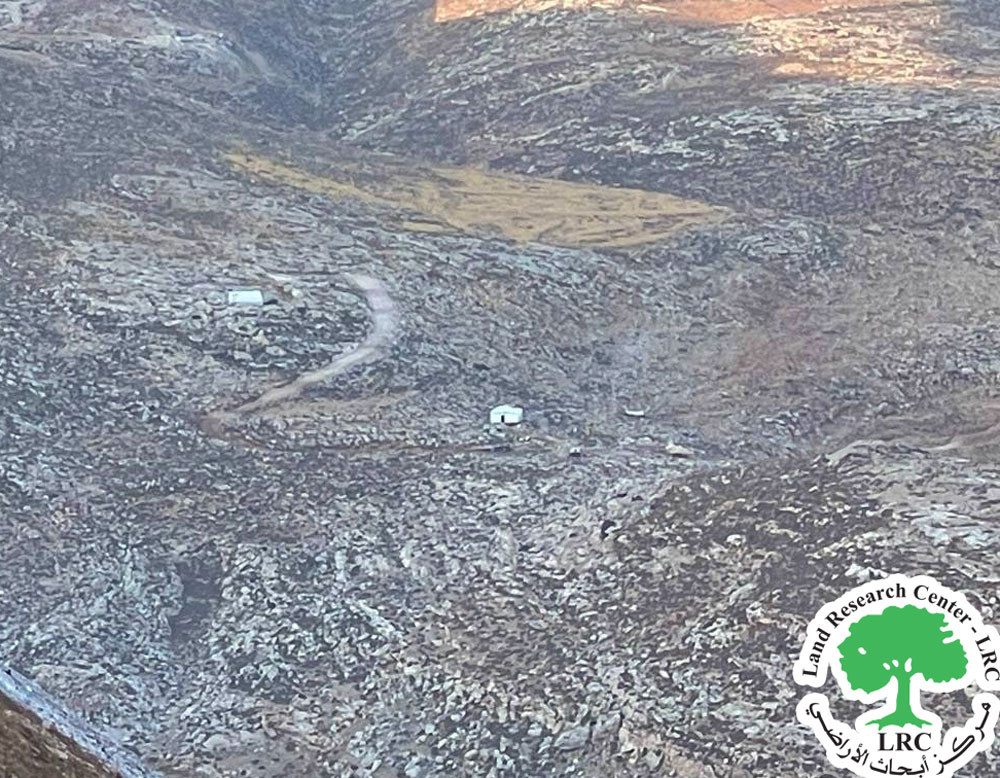2024-07-10
Settlers Establish a New Outpost on Lands of Al-Mughayer Village in Ramallah Governorate
View of the new settlement outpost
Violation: Establishment of a new settlement outpost.
Location: Lands of Al-Mughayer Village / Ramallah Governorate.
Date of Violation: 10/07/2024.
Perpetrator: Settlers.
Affected Party: Residents of Al-Mughayer Village.
Description: On Wednesday, July 10, 2024, a group of settlers established a new outpost on the lands of Al-Mughayer Village, located northeast of Ramallah, in the area known as "Ain al-Banat." The settlers seized a piece of land belonging to local residents and set up a mobile metal unit on a hillside that was previously used as grazing land by shepherds. This outpost is situated approximately one kilometer southeast of the village.
The establishment of this outpost is seen as a means to create connectivity between several outposts, significantly accelerating the process of settlement expansion in the area. The outpost is situated on an elevated hill and will damage hundreds of dunams of surrounding land.
Over the past two years, there has been a notable increase in colonial construction and the establishment of new outposts in the Shafaghur area northeast of Ramallah, which has been a major cause of the displacement of many Bedouin communities from multiple sites.
About Al-Mughayer Village[1]:
Al-Mughayer Village is located northeast of Ramallah, approximately 30 km from the city. As of 2017, the village had a population of about 2,872 residents according to the Palestinian Central Bureau of Statistics. Most of the village's lands are situated in the eastern part, extending up to the Jordan River, covering a total area of 33,055 dunams, with 501 dunams designated as built-up area of the village.
The occupation has confiscated over 37 dunams of its land for the construction of Bypass Road No. 458. According to the Oslo Accords, 95% of the village's area is classified as Area C, under full Israeli control, while only 5% is classified as Area B. The areas are divided as follows:
- Area B: 1,695 dunams.
- Area C: 31,360 dunams.
Settlement Expansion and Outpost Construction Threaten the Palestinian Environment:
The threat to the Palestinian environment persists due to the ongoing construction and expansion of settlements on Palestinian lands. Expansion into grazing lands results in additional environmental pollution. The types of environmental pollution caused by Israeli settlements and factories, including sewage, destruction, and leveling of agricultural and grazing lands to make way for settlement areas, have severe impacts on biodiversity in Palestine. Land leveling for settlements and bypass roads removes green spaces, plants, trees, and large forest areas, leading to the disappearance of many plant species that cannot regrow in the same area.
Excavation work also destroys wildlife habitats, causing animals to flee and migrate elsewhere, leading to environmental fragmentation in Palestine. The effects of other environmental pollutants impact plant growth, insect reproduction, and the spread of diseases that affect wildlife. The major issue is the depletion of Palestinian water resources, which results in reduced water availability and hinders plant and tree growth.
[1] LRC-GIS.

